When shopping on Amazon, 79% of consumers are influenced by products with the best ratings and reviews. This makes achieving a high review count a crucial driver of long term success for Amazon sellers, who in turn need to understand the reasons consumers leave reviews in the first place.
Pursuing a high review count presents a catch-22 for sellers: a large quantity of reviews can send revenue soaring, but it’s often difficult to rack them up. This is especially true in the first few months after listing a product, when potential customers may be wary of purchasing a product with an exceptional rating if there are too few reviews to back it up.
Sellers know the conventional wisdom about what motivates customers to leave reviews: they either love or hate the product enough to take the time to write about it. But the full story is often much more complex.
The Q1 2021 Consumer Trends Report reveals the top reasons consumers speak up through product reviews, which offer important guidance to online sellers trying to make sense of customer feedback. These insights can help ecommerce entrepreneurs optimize every stage of selling products online, from research to sourcing to fulfillment. It even offers insights into how sellers can get more reviews.
The top 7 reasons consumers leave reviews
Some online reviews have a clear motive. Others are at best inscrutable. To get some answers about the kinds of reviews Amazon sellers can expect—and which ones to look out for as opportunities to grow their business—we surveyed over 1,000 U.S. consumers about what motivates them to leave product reviews. Here are the top seven reasons, ranked in order of popularity.
This should come as a relief to every Amazon seller who values their product ratings: the desire to praise an excellent product is the number one motivator for customers who leave product reviews. 56% of consumers said they’d leave a review if the product they purchased was excellent—the leading reason by a long shot. Amazon customers have the choice to leave reviews, good or bad. That’s what makes these the absolute best to read as a seller—someone went out of their way to communicate how your product improved their life. Every Amazon seller dreams of getting a review like this one for a cat-sized bunny suit. The second-biggest motivator for product reviews mobilizes 41% of consumers to reach for their keyboards: the product was unsatisfactory (for reasons other than arriving broken). The good news is that this kind of criticism lets sellers see their product in a new light, allowing them to identify areas of improvement for the product they may have missed during their supplier sample evaluation. Of course, individual preferences inform satisfaction, so don’t get too down on yourself if the negative feedback seems subjective at times. For example, this review for a teddy bear starts by pointing out quality-related issues, and then it gets personal. 38% of consumers leave reviews to inform other customers about the product’s size, fit, performance, or other useful characteristic. This sort of reviewer can be a blessing or a curse for an online seller, depending on the angle. For instance, customers who share expert-level tips on how to use your product can help persuade others to make a purchase. Take this review for a moisturizer, in which a customer explains the science behind its effectiveness. Keep in mind that a customer’s academic approach to demystifying your product isn’t guaranteed to help you, as evidenced by this review for supplement gummies. 29% of consumers would speak up in the reviews if their product arrived broken. Sellers should monitor the frequency of broken-on-arrival complaints. While ecommerce product packaging should be memorable, make sure it’s for the right reasons—it should look great, while first and foremost protecting what’s inside it. This lava lamp listing has generated 29 Amazon reviews containing the word “broken,” resulting in at least one ruined afternoon. A recurring issue like this warrants a conversation with the supplier about protective packaging. Nearly a third (29%) of consumers would leave a review if promised a reward in return. Amazon sellers can no longer run their own incentivized review campaigns—Amazon banned these in 2016, along with other questionable review-related tactics like writing glowing endorsements for your own products and spamming the ‘Report Abuse’ feature on your competitors’ product listings. (For a full list of Amazon seller review dos and don’ts, see our guide.) However, Amazon itself can incentivize reviewers on behalf of third-party sellers through its own programs like the Amazon Vine, Editorial Recommendations, or the Early Reviewer Program. That way, sellers can still reap the benefits of consumers’ penchant for quid-pro-quo testimonials—they just have to let Amazon handle logistics. As we’ve mentioned in previous articles, Vine Voices and Early Reviewers are not obligated to offer positive feedback (or any feedback at all). There’s also no requirement that incentivized reviews be particularly thorough. Exhibit A: this Early Reviewer Program shoutout for a “simple and cost effective” cake pop/lollipop mold (the Early Reviewer Program has since been discontinued). Still, painfully honest reviews can help sellers nip production issues in the bud, like the disappointing cosmetic error on these Vine Voice-reviewed slippers. 22% of consumers would make it known that they felt they’d overpaid for a product. Despite Amazon’s efforts to offer customers engaging product descriptions and live product demos, the reality of not being able to see, touch, or try out products in real life before purchasing can lead to dramatic expectations-versus-reality moments when a customer’s order finally arrives. Fortunately, some shoppers can easily identify the redeeming qualities of their unsatisfactory purchase. Take this chia pet enthusiast, for one. Not every aficionado will be so charitable, so don’t skimp on due diligence during product development. A cousin of the disgruntled connoisseur is the unsolicited advisor, who is nearly as active in the review section. One in five (20%) of consumers would leave a review as a form of constructive criticism—which is too many when you consider the likelihood of a high unhelpful-to-helpful ratio. For example, say you decide to leave metal choking-hazard pieces out of a children’s board game. You may unwittingly incur the wrath of grown-up collectors who have their own ideas about how many cubic centimeters of pewter $19.99 should get you these days. Thankfully, it seems the majority of target customers can look past such niche gripes. For instance, the ratings for this 36-count box of Crayola colored pencils (nontoxic and preferred by teachers!) are going strong despite some woeful shortcomings brought to the public’s attention by a representative of the adult coloring community. Take reviews like these in stride—you won’t please everyone with your final product. But you can minimize dissatisfaction through scrupulous product research: pay attention to the winning and losing characteristics of competing products, and let critical feedback guide your product development. That way, you can avoid listing an item worth complaining about. At Jungle Scout, we know the product review struggle. Our experts have written about the importance of product reviews, published comprehensive guides on how to get reviews, and offered pro tips on navigating Amazon’s customer communication rules. We’ve even developed tools to automate the review request process to save sellers time. At this point, we’ve landed on several go-to techniques for boosting your review count. Here are our top strategies for getting more product reviews: You can also leverage the incentivized review programs mentioned earlier. Amazon Vine and Editorial Recommendations offer benefits that can take product sales above and beyond what a seller could achieve on their own: These proven tactics will help address every reason consumers leave reviews—from bad to good. If you’re struggling with sparse or negative customer feedback, statistics say you’re not alone. Don’t let the difficulty in getting product reviews keep you from being successful on Amazon—know the reasons consumers leave reviews, try a new strategy, and see how your customers respond. Do you have a product review horror story, or an endorsement too heartwarming not to share? Drop it in the comments!
Rank
Reason
Percent of Consumers
1
The product was excellent
56%
2
The product was unsatisfactory for reasons other than arriving broken
41%
3
I want to help other buyers understand the product’s size or other relevant characteristics
38%
4
The product arrived broken
29%
5
I get an incentive for leaving a review
29%
6
The product was more expensive than I felt it was worth
22%
7
I had ideas about how to improve the product
20%
1. The product was excellent
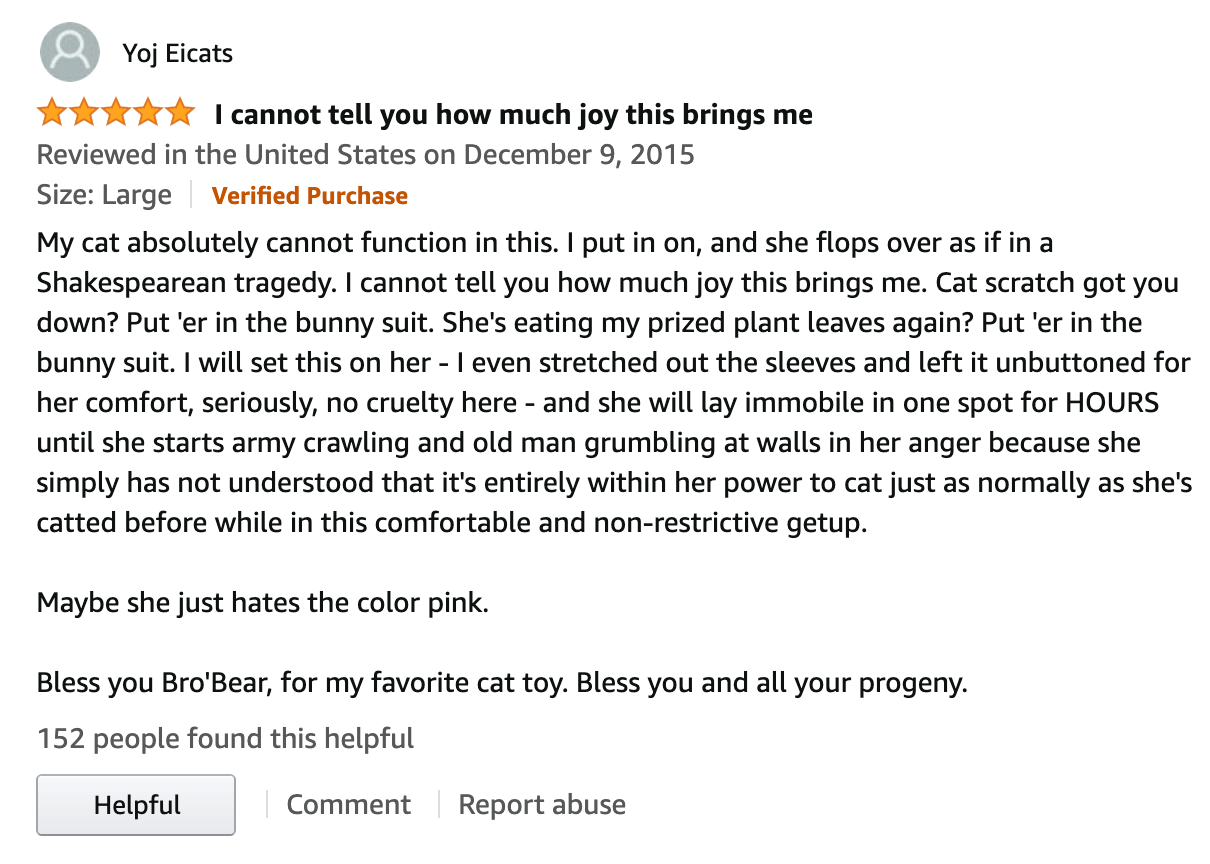
2. The product arrived intact, but didn’t satisfy
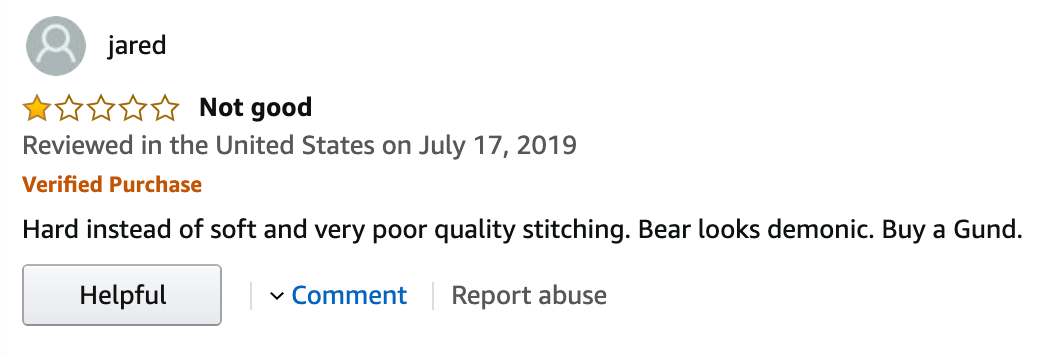
3. The consumer wants to help other buyers understand the product
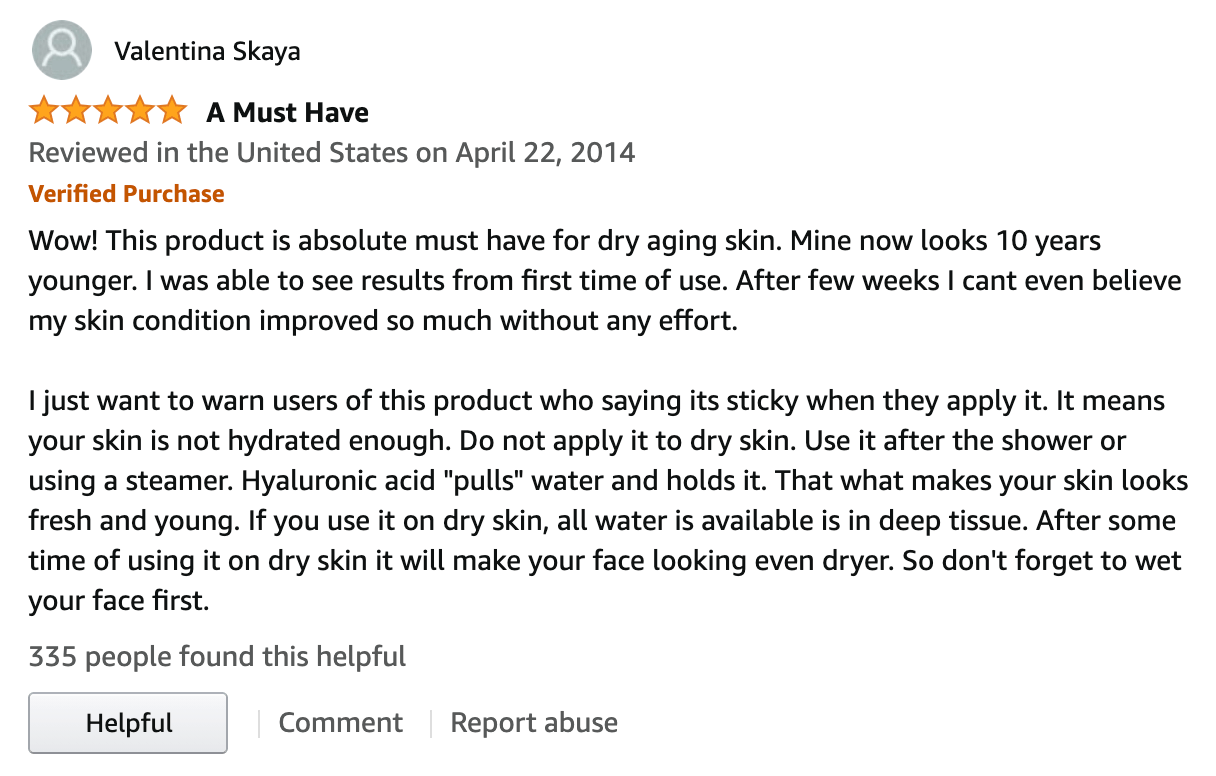

4. The product arrived broken

5. There’s an incentive for leaving a review
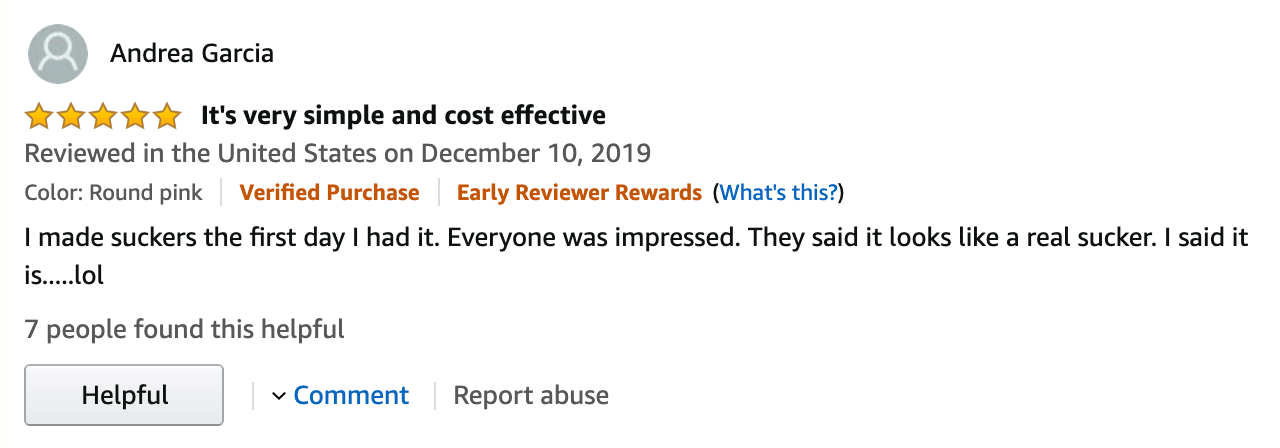
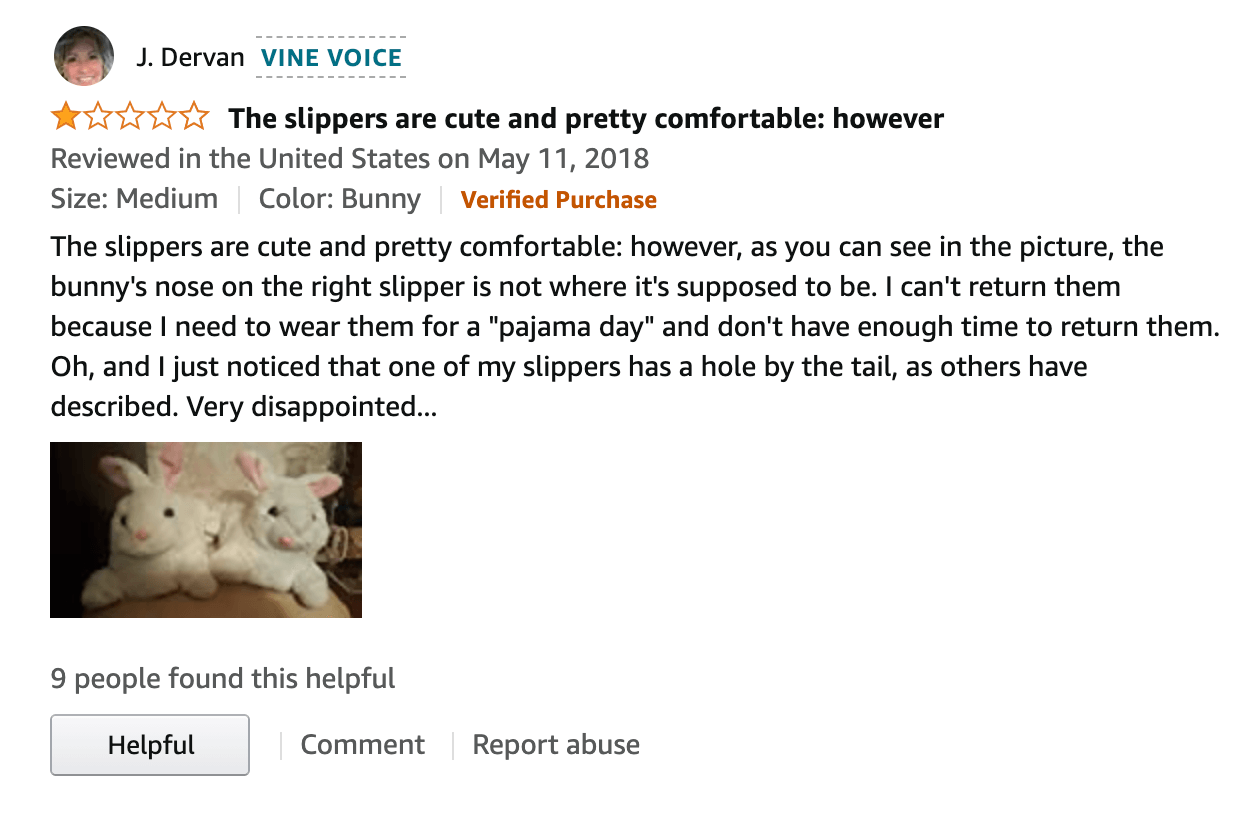
6. The product was more expensive than the consumer felt it was worth
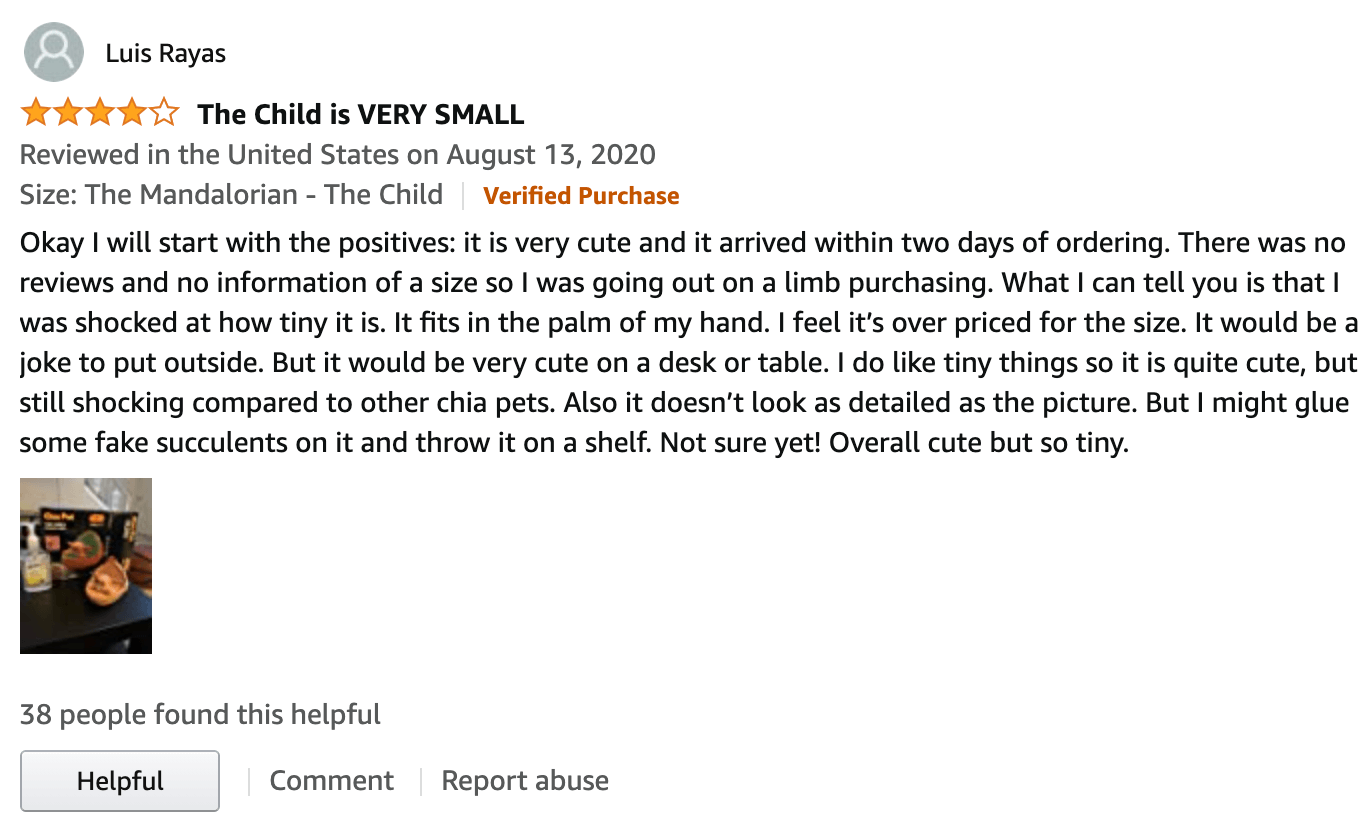

7. The customer had ideas about how to improve the product
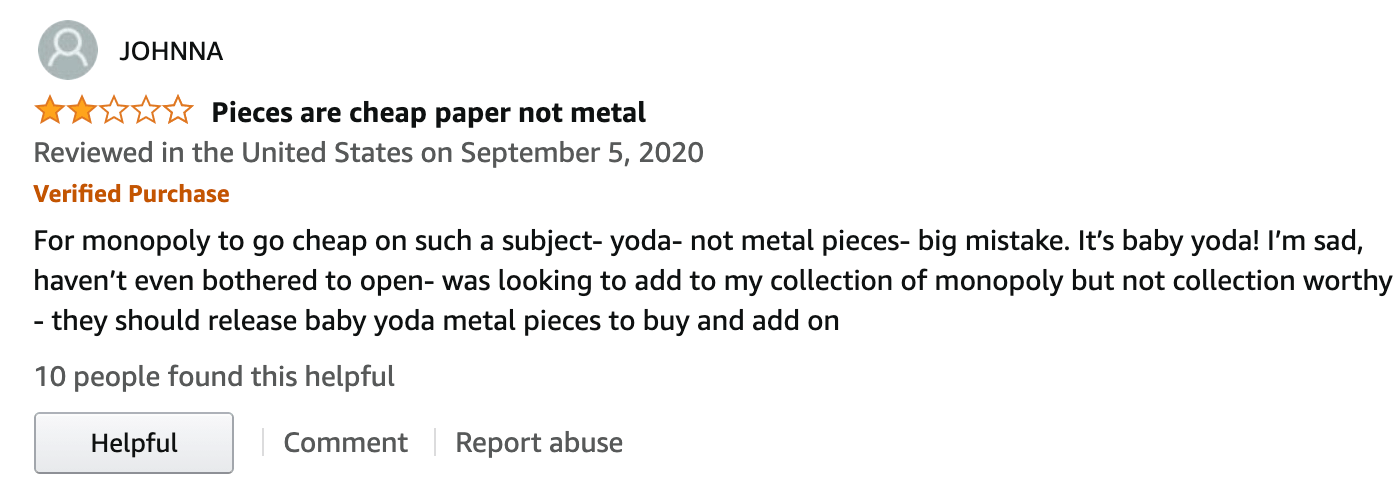
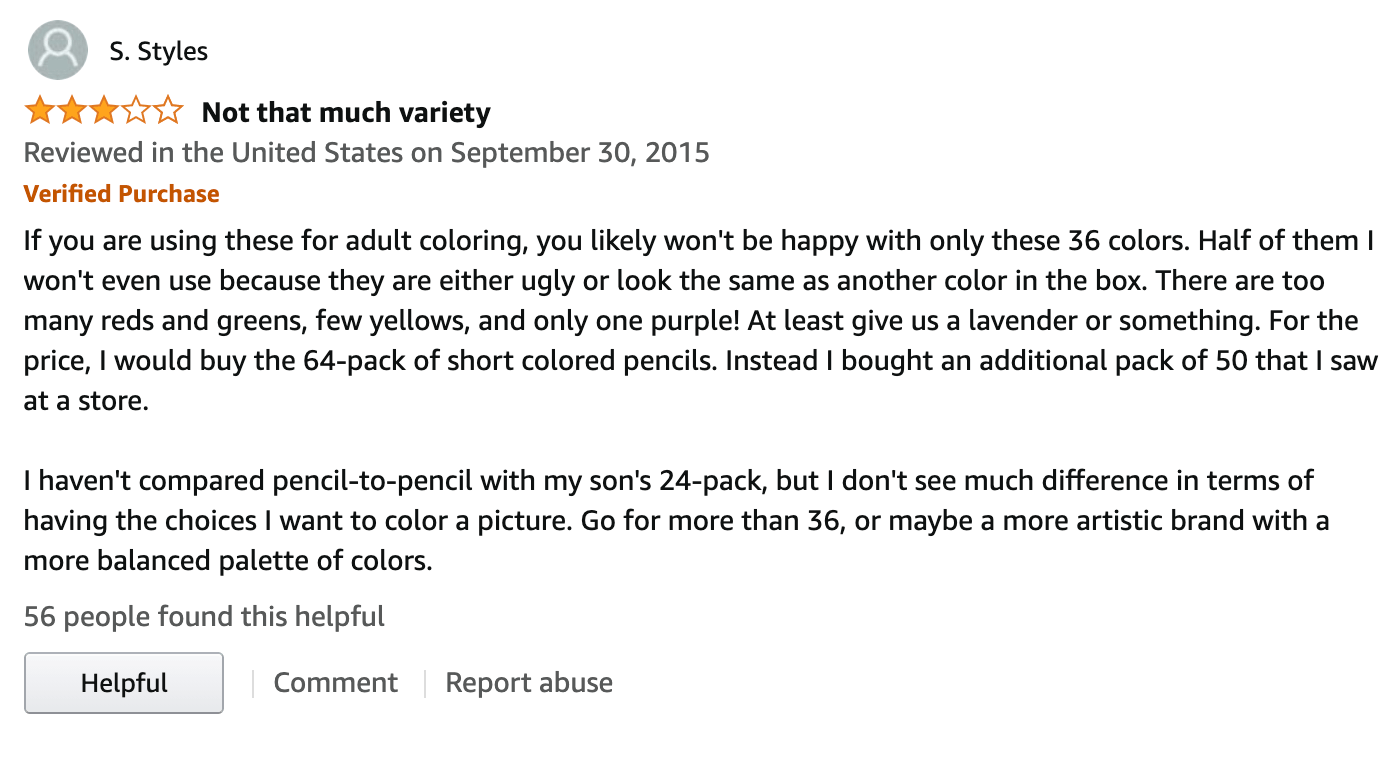
How to get more product reviews online
Start getting better product reviews today
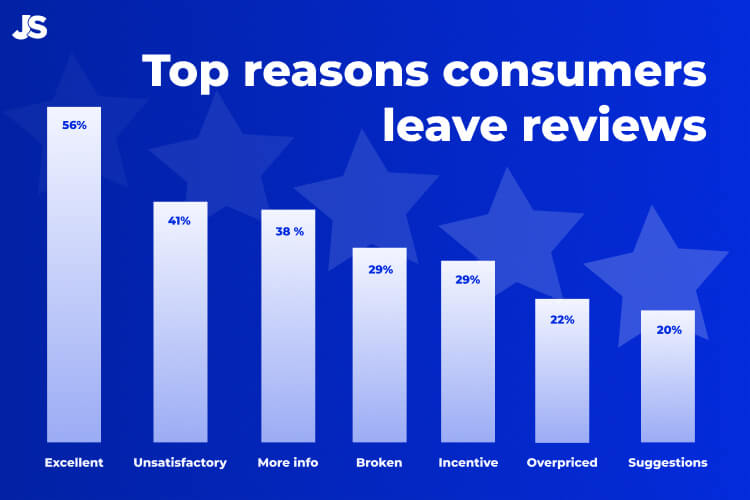
 2 Comments
2 Comments
2 comments on “Online Review Stats for 2021: The Top 7 Reasons Consumers Leave Reviews”